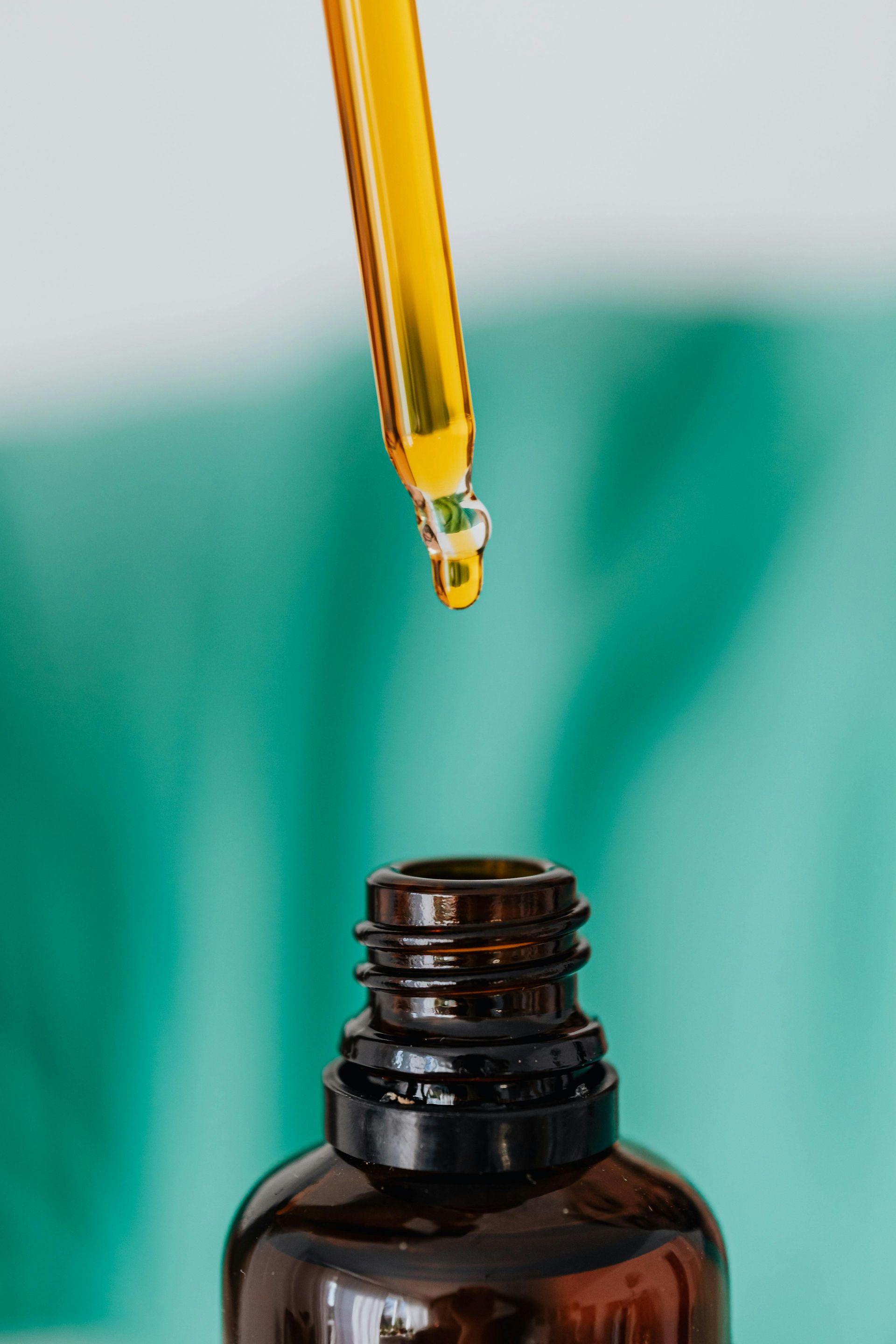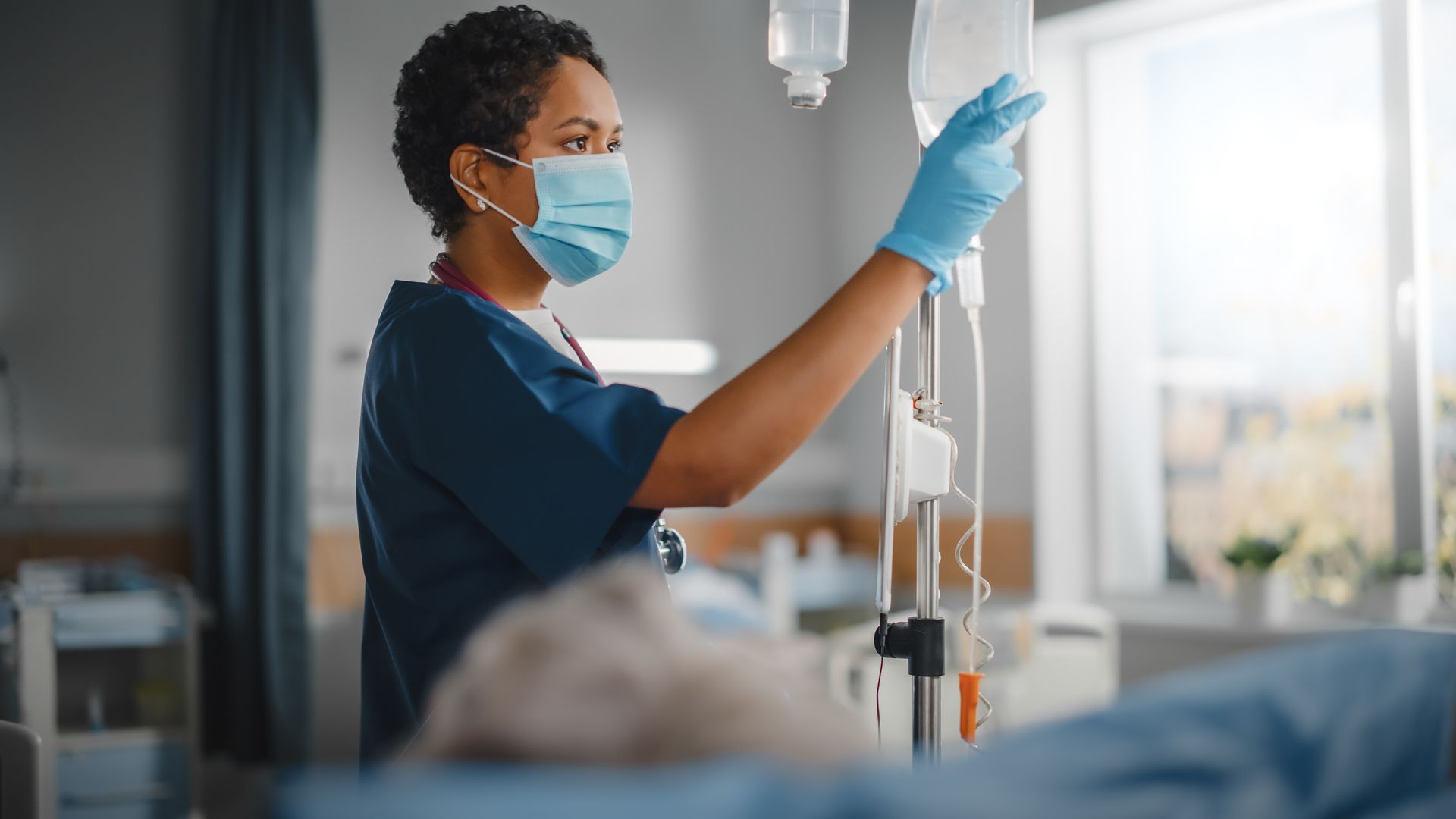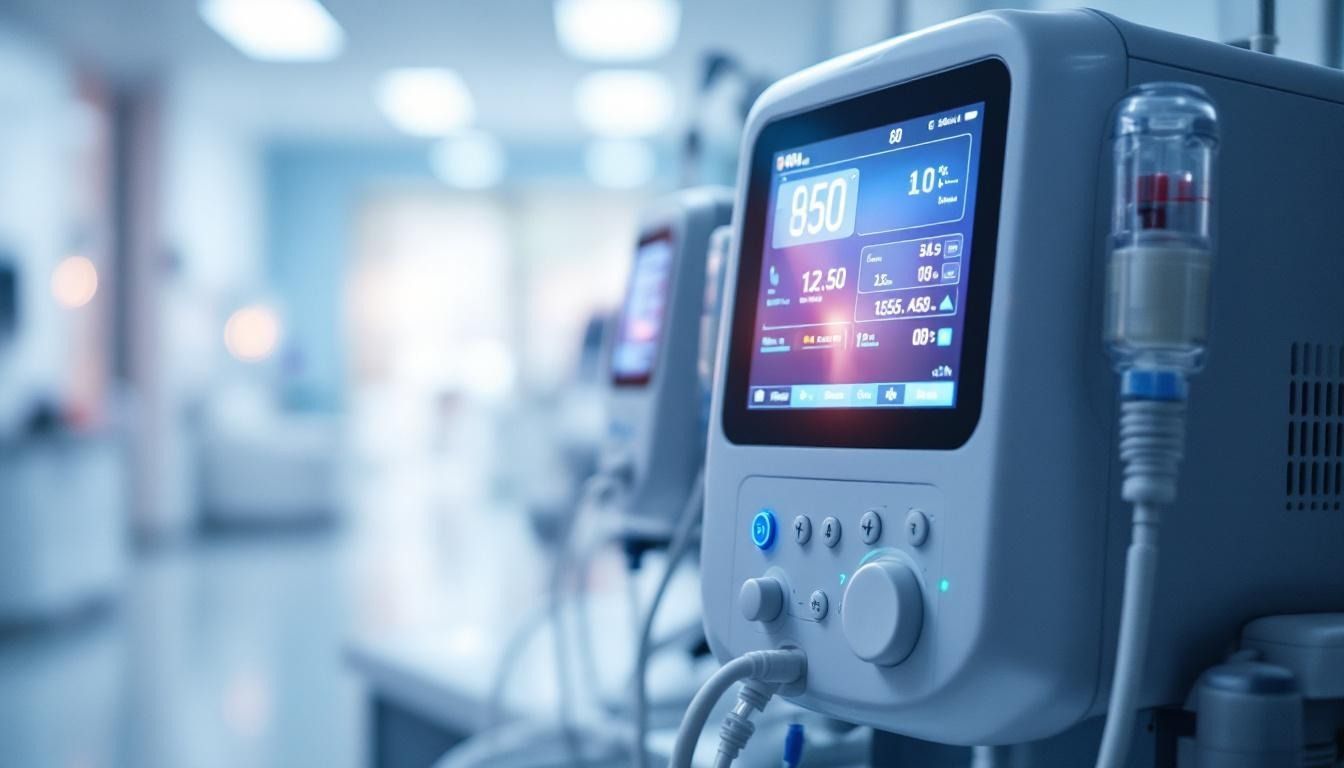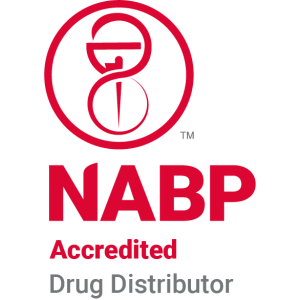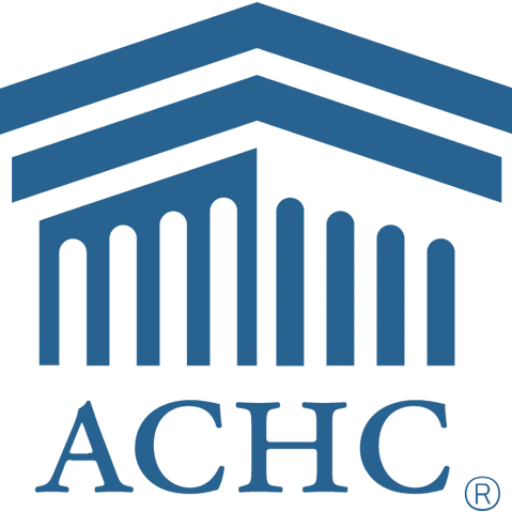TPN and digestive health tips
Understanding Total Parenteral Nutrition (TPN)
Total Parenteral Nutrition (TPN) is a critical medical intervention used to deliver complete nutrition directly into the bloodstream, bypassing the standard digestive processes. This technique is essential for individuals whose digestive systems are not functional due to various medical conditions or surgeries. TPN ensures that patients receive all necessary macro and micronutrients to support life and recovery when oral intake is not possible. This article explores the multifaceted role of TPN, its administration, potential risks, and practical tips for effectively managing digestive health while on TPN.
What is TPN and Who Needs It?

What is Total Parenteral Nutrition (TPN) and how is it used?
Total Parenteral Nutrition (TPN) is a specialized medical treatment that involves delivering complete nutritional support directly into a patient's bloodstream via intravenous (IV) means. This method is crucial for individuals who cannot digest or absorb food through their gastrointestinal (GI) tract due to various medical conditions. TPN allows patients to bypass the GI system entirely, ensuring they receive the essential nutrients necessary for their recovery.
Typically, TPN is used in cases of severe digestive health conditions including:
- Short bowel syndrome : A condition often following surgery, where substantial parts of the intestine are absent, leading to malabsorption.
- Cancer : Particularly when the digestive tract is affected, either by the disease itself or due to treatment side effects such as severe nausea and vomiting.
- Intestinal obstructions : Blockages that prevent food from moving through the intestines.
- Inflammatory bowel diseases : Such as Crohn's disease or ulcerative colitis, which impair nutrient absorption.
The formulation of TPN is tailored to individual patients, incorporating a mix of carbohydrates (55-60%), fats (25-30%), and proteins (10-15%) alongside essential vitamins and minerals. These adjustments are vital for meeting the unique needs of each patient and supporting their recovery. Daily blood work is required to monitor metabolic and electrolyte balances, ensuring the TPN formula corresponds with their current nutritional requirements.
Administering and Monitoring TPN

How is TPN administered and monitored?
Total Parenteral Nutrition (TPN) is delivered directly into the bloodstream through a central venous catheter (CVC), which can be either a port implanted in the chest or a PICC line. This method ensures that patients receive their nutrition effectively when their digestive systems cannot function properly.
The TPN infusion typically lasts between 10 to 12 hours, often scheduled overnight to minimize disruption to daily routines. Here are key steps in the administration process:
- Preparation: Ensure proper hand hygiene and gather all necessary supplies, including the TPN bag and infusion pump.
- Inspection: Check the TPN bag for patient information and clarity to confirm it’s safe for use.
- Flushing: Flush the CVC with sterile saline before and after administering the TPN to maintain catheter function and prevent blockages.
Monitoring during TPN infusion is crucial for patient safety. Regular blood work is essential to keep track of electrolyte levels and nutritional status to prevent complications like infections or imbalances. It is vital for patients to report any unusual symptoms, such as fever or chills, to their healthcare team promptly.
Post-infusion care involves safely disconnecting the TPN line and flushing the CVC again, which helps maintain catheter integrity and prevents potential infections.
Risks and Side Effects of TPN
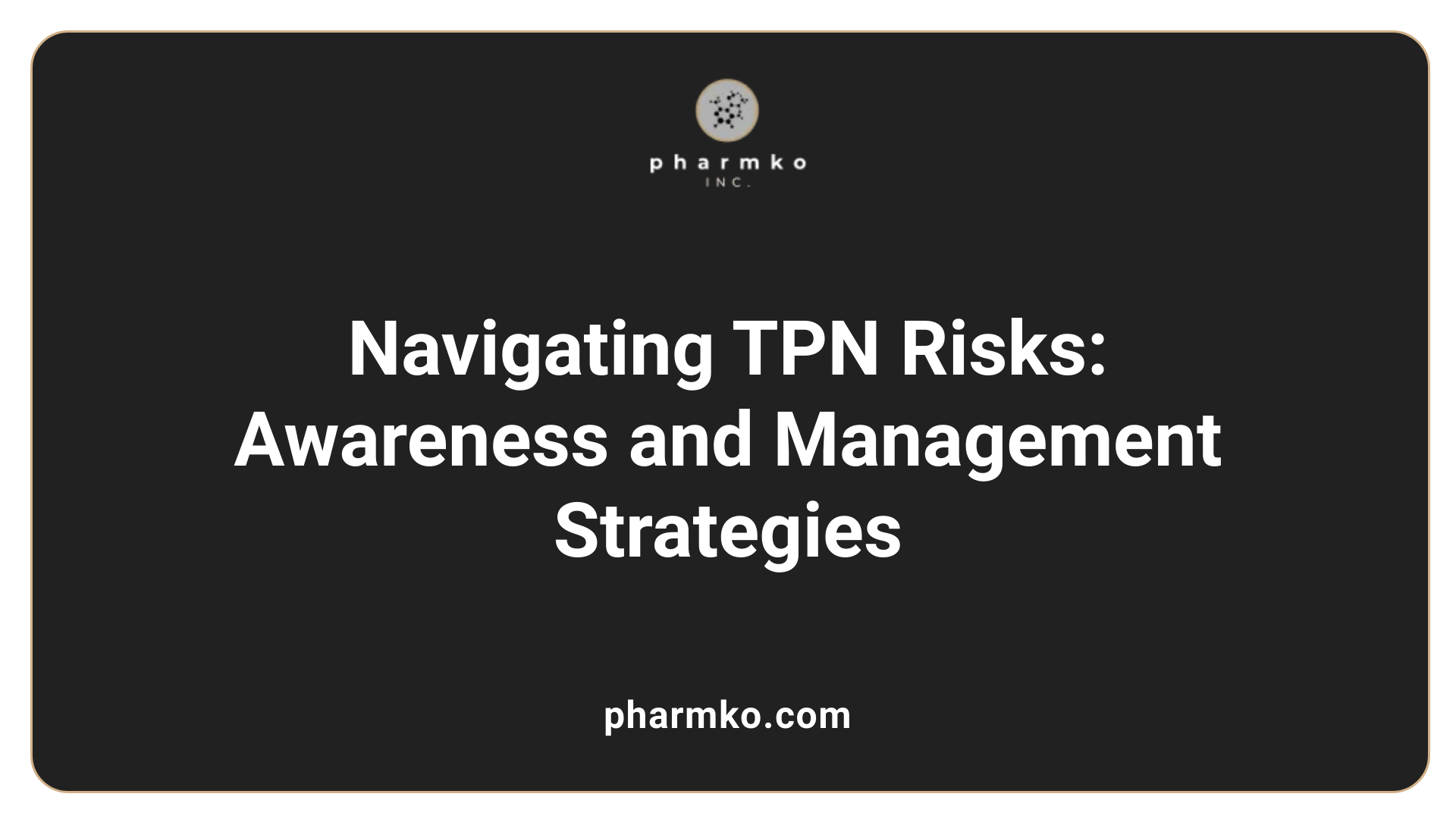
What are the side effects and risks associated with TPN?
While TPN (total parenteral nutrition) can be lifesaving for patients with non-functional digestive systems, it comes with a range of risks and potential side effects. Common side effects include:
- Nausea
- Vomiting
- Diarrhea
- Increased urination
- Rapid weight fluctuations
What serious complications can arise from TPN?
Serious complications often stem from catheter-related issues, with risks including:
- Thrombosis: Blood clots can form due to the catheter insertion.
- Sepsis: Bacteria entering the bloodstream can lead to systemic infections.
- Pneumothorax: Accidental puncturing of the lung during catheter placement.
Are there long-term risks associated with TPN?
Long-term use of TPN can lead to significant health concerns, such as:
- Liver dysfunction: Prolonged use may cause liver damage due to high fat content in TPN solutions.
- Metabolic bone diseases: Individuals can experience deficiencies in calcium and phosphorus.
- Refeeding syndrome: This dangerous condition occurs when feeding is resumed after a period of malnutrition, causing severe shifts in electrolytes.
The metabolic complications of TPN affect up to 50% of patients, particularly with issues like hyperglycemia, making careful monitoring essential for managing these risks effectively.
Maintaining Digestive Health on TPN
Do people on TPN have bowel movements?
People on Total Parenteral Nutrition (TPN) can indeed have bowel movements, although the frequency and composition may differ from those not on TPN. TPN bypasses the gastrointestinal tract, which can lead to reduced stimulation of the digestive system and subsequently decreased production of digestive enzymes. As a result, bowel movements might be infrequent or have altered characteristics, possibly due to the lack of fiber intake and reduced intestinal activity. Patients on TPN should be closely monitored for gastrointestinal status and any changes in bowel habits. Overall, while TPN provides essential nutrients, it impacts digestive health and requires careful management to maintain overall well-being.
Impact of TPN on hunger and thirst
Due to the infusion of complete nutrition directly into the bloodstream, patients receiving TPN typically do not experience sensations of hunger or thirst. This can ease the adjustment to not eating normally, as the nutritional needs are being met intravenously. However, maintaining good oral hygiene remains important, even if patients are not consuming food or drink. This practice supports overall oral health, which can be affected even without traditional eating habits.
Managing digestive health while on TPN
Given that TPN provides all necessary nutrients, individuals must be mindful of their digestive health. Regular assessments and adjustments to the TPN formulation are essential during therapy, especially as lab results change. Awareness of potential side effects, such as infection risk from the catheter and the importance of proper PICC line care, is critical. Additionally, patients should be educated about the need for ongoing communication with healthcare providers to ensure optimal health outcomes and effective management of any issues that arise.
Living with TPN: Dietary and Lifestyle Considerations

Dietary management for TPN patients
Managing a diet while on Total Parenteral Nutrition (TPN) can be complex. TPN aims to deliver all necessary nutrients intravenously, which means that oral intake may be limited. While some patients may eat small amounts of food or supplements, others may need to abstain entirely from oral consumption due to medical constraints. Monitoring is essential to avoid complications such as malnutrition and blood sugar fluctuations. Therefore, consulting with healthcare providers is crucial for tailoring dietary plans to individual needs.
Coexisting with TPN in everyday life
Living with TPN requires adjustments in daily routines. Many patients establish a routine with TPN infusions, often choosing to have them at night to minimize disruption. It's vital for patients to keep their catheter site clean to avoid infections, and they should be mindful of any activities that might jeopardize their port's sterility. Maintaining social interactions, especially in food-centered gatherings, can also be a challenge but engaging in non-food-related activities can help combat feelings of isolation.
Strategies for maximizing quality of life while on TPN
To enhance quality of life on TPN, individuals can consider joining support groups to connect with others facing similar challenges. Practicing self-care, educating friends and family about TPN, and monitoring potential side effects like fatigue or nausea can also improve life quality. Cultivating positivity and patience during adjustment phases is equally important. These strategies not only help manage the physical aspects of TPN but also support emotional well-being throughout the journey.
Can you eat normally while on TPN?
Whether a patient on TPN can eat normally varies based on individual medical conditions. Some patients may be able to consume supplements or small amounts of food, while others may need to avoid eating altogether due to potential complications like blockages or dehydration. TPN is designed to provide complete nutrition without using the gastrointestinal tract, and in many cases, patients will have reduced bowel movements due to lack of oral intake. Although eating while on TPN is possible for some, it requires careful management and monitoring by healthcare providers to avoid issues such as malnutrition or changes in blood sugar levels. Ultimately, the ability to eat while on TPN depends on the patient's specific health status and the recommendations of their medical team.
Practical Tips for Self-Administration and Equipment Care

Guidance for home administration of TPN
For individuals administering Total Parenteral Nutrition (TPN) at home, understanding the equipment and medication is vital. First, it’s essential to collaborate with healthcare professionals, including nurses and dietitians, who can guide the setup and usage of the IV pump and infusion bags. Keeping a log of infusion rates, potential side effects, and lab results can help track health status and ensure ongoing nutritional adequacy.
Preventing infections related to TPN equipment
Infection prevention is crucial when managing TPN at home. Proper hygiene practices, such as washing hands thoroughly before handling the IV site or supplies, are essential. Use sterile techniques when accessing the catheter and ensure the area is clean. Regularly check the PICC line or port site for signs of infection like redness or swelling. Changing dressings according to your doctor's schedule helps minimize infection risks.
Establishing routines for living with TPN
Maintaining a routine can support emotional and physical well-being. Many patients find that scheduling infusions overnight helps them feel less disrupted during the day. Engaging in non-food-related activities with friends or family promotes social connections, which is important for mental health. In addition, understanding and differentiating between hunger and cravings can help manage expectations and challenges related to food and eating while relying on TPN.
Conclusion: Navigating Life on TPN
Living with Total Parenteral Nutrition requires careful management and a supportive network to maintain both physical and emotional well-being. While TPN provides essential nourishment to those who cannot absorb nutrients through traditional means, it necessitates lifestyle adjustments and rigorous monitoring to mitigate potential risks and complications. With the right care strategies and support systems in place, individuals on TPN can lead fulfilling lives, finding balance between medical necessities and everyday activities. Continuing education and open communication with healthcare providers remain crucial for effectively addressing the challenges and opportunities presented by TPN.
References
- TPN guidelines for digestive health - Pharmko
- Parenteral Nutrition: What it Is, Uses & Types - Cleveland Clinic
- Total Parenteral Nutrition (TPN) - Advocate Health Care
- 10 Tips for Adjusting to Your Life With TPN (Total Parenteral Nutrition)
- How TPN bypasses the GI tract - Pharmko
- Total Parenteral Nutrition (TPN) - Aurora Health Care
- Mastering the Short Bowel Syndrome (SBS) Diet - Nutrishare
- Everything You Need to Know About Total Parenteral Nutrition
- Learning About Total Parenteral Nutrition (TPN) - MyHealth Alberta
- Total Parenteral Nutrition (TPN) Information - Columbia Doctors



